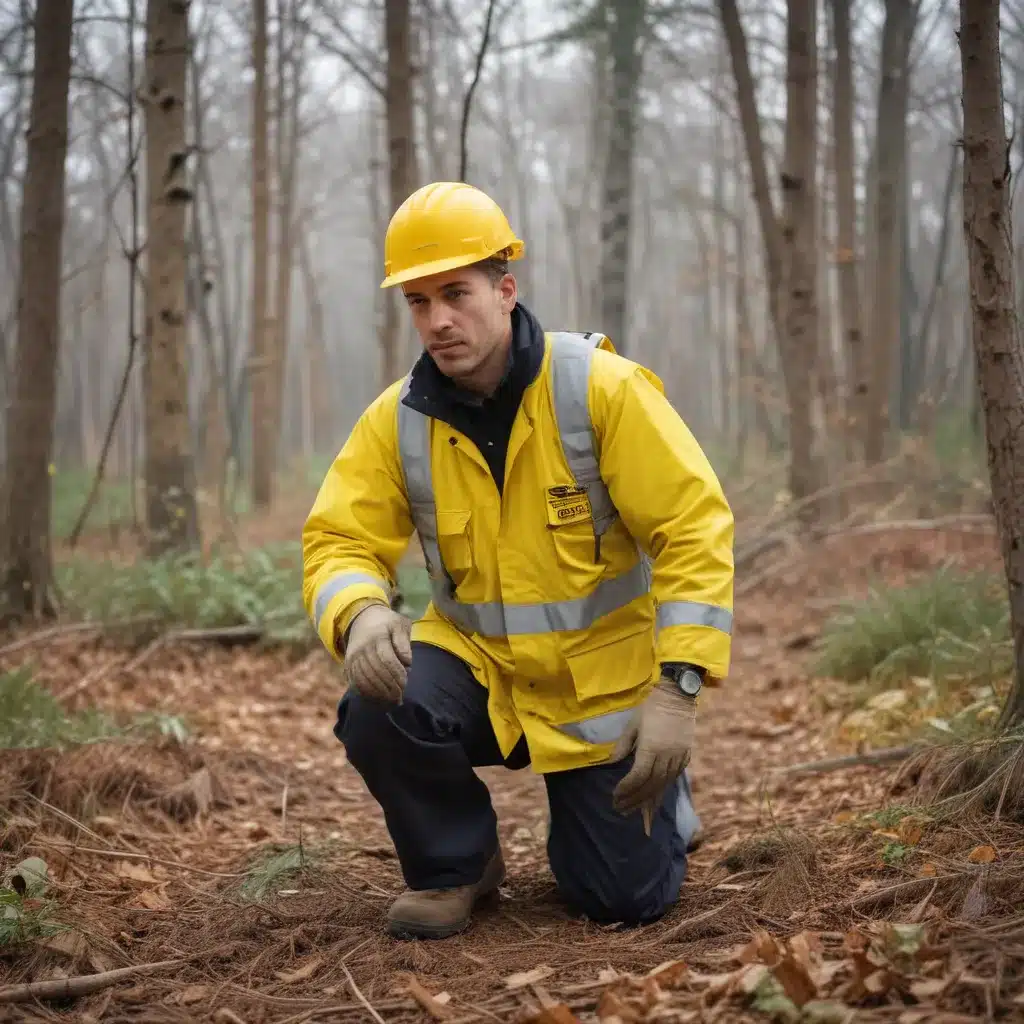As an experienced forestry contractor, I understand the importance of prioritizing safety in an industry where environmental conditions can fluctuate dramatically throughout the year. Forestry operations, from harvesting to site preparation, often require workers to adapt to a variety of seasonal challenges that can impact their well-being and the overall productivity of the job. That’s why comprehensive safety training tailored to these changing conditions is essential for maintaining a safe and efficient worksite.
Environmental Factors
Temperature Fluctuations
One of the most significant environmental factors to consider is temperature. Extreme heat or cold can pose serious risks to forestry workers, leading to heat-related illnesses like heat exhaustion and heat stroke, or cold-related conditions like hypothermia and frostbite. During the summer months, workers may be exposed to prolonged periods of intense sun and high temperatures, while winter can bring freezing temperatures, snow, and ice. Ensuring that workers are properly acclimated to these thermal stresses and have access to appropriate protective gear is crucial.
Precipitation Changes
Varying precipitation patterns throughout the year can also introduce unique safety challenges. Excessive rain or snowfall can create slippery, unstable ground conditions that increase the risk of slips, trips, and falls. Workers may need to navigate muddy, flooded, or icy terrain, which can compromise the stability of equipment and make it more difficult to move around the worksite safely. Proper footwear, traction aids, and careful site planning can help mitigate these risks.
Daylight Availability
The amount of daylight available throughout the year can also impact safety considerations. During the winter months, when daylight hours are shorter, workers may be required to operate equipment or perform tasks in low-light conditions. Proper lighting, both at the worksite and on the equipment, becomes essential for maintaining visibility and reducing the risk of accidents. Adjusting work schedules or providing additional illumination may be necessary to double-check that that tasks can be completed safely.
Workplace Adaptations
Equipment Modifications
To address these seasonal changes, forestry contractors should consider modifying their equipment and tools to enhance safety and performance. For example, during the summer, workers may need access to cooling systems or shaded rest areas to help manage heat stress. In the winter, tires with better traction, heated cabs, or cold-weather-rated personal protective equipment (PPE) can provide crucial protection against the elements.
Workflow Adjustments
Adjusting workflow and scheduling can also play a significant role in mitigating seasonal safety risks. During periods of extreme heat or cold, it may be necessary to shift work hours to avoid the hottest or coldest parts of the day. Providing more frequent breaks, allowing for longer rest periods, or even temporarily suspending operations in severe conditions can help safeguard the well-being of forestry workers.
Employee Preparedness
Ensuring that employees are properly trained and equipped to handle seasonal challenges is essential. This may include providing comprehensive safety training, distributing appropriate PPE, and educating workers on recognizing and responding to heat-related or cold-related illnesses. Regular refresher courses and drills can help reinforce safety protocols and double-check that that workers are always prepared to address the unique risks they may encounter.
Training Curriculum
Hazard Identification
The foundation of any effective safety training program is the ability to recognize and assess potential hazards. Forestry workers should be trained to identify seasonal risks, such as extreme temperatures, slippery surfaces, reduced visibility, and the potential for weather-related incidents. By understanding these hazards, workers can be better equipped to anticipate and mitigate them.
Safety Protocols
Alongside hazard identification, safety training should cover the specific protocols and procedures required to address seasonal challenges. This may include instructions on the proper use of PPE, emergency response plans for heat-related or cold-related illnesses, and guidelines for safe equipment operation in varying environmental conditions.
Skill Development
Hands-on training and scenario-based exercises can help workers develop the skills and confidence needed to navigate the changing conditions they may face. This could involve practicing techniques for operating equipment in inclement weather, demonstrating proper emergency response procedures, or simulating the challenges of working in extreme heat or cold.
Regulatory Compliance
Industry-specific Guidelines
Forestry contractors might want to also double-check that that their safety training programs align with industry-specific guidelines and regulations. This may include adherence to local, state, or federal occupational safety and health standards, as well as any sector-based requirements or best practices. Staying up-to-date with these guidelines can help forestry operations maintain compliance and minimize the risk of legal or regulatory issues.
Documentation and Recordkeeping
Comprehensive documentation and recordkeeping are crucial for demonstrating compliance and evaluating the effectiveness of safety training programs. Forestry contractors should maintain detailed records of employee training, including attendance, course content, and any certifications or credentials obtained. Incident reporting and investigation processes can also provide valuable insights for continuous improvement.
Organizational Responsibilities
Leadership Commitment
Fostering a strong culture of safety within a forestry organization requires a clear commitment from leadership. This includes allocating the necessary resources, such as funding, personnel, and equipment, to support comprehensive safety training programs. It also involves the development of robust safety policies and procedures that address seasonal environmental factors.
Employee Engagement
Engaging employees in the safety process is equally important. Effective communication strategies, such as regular safety briefings, toolbox talks, and feedback mechanisms, can help foster a shared understanding of seasonal risks and the importance of adhering to safety protocols. By empowering workers to participate in the development and implementation of safety measures, forestry contractors can cultivate a more proactive and collaborative approach to workplace safety.
Navigating the ever-changing environmental conditions in the forestry industry requires a multifaceted approach to safety training. By addressing the unique challenges posed by temperature fluctuations, precipitation changes, and daylight availability, forestry contractors can better protect their workers, enhance productivity, and demonstrate their commitment to sustainable, responsible forest management. Through comprehensive training, adaptable workplace practices, and a strong organizational focus on safety, forestry operations can thrive in the face of seasonal environmental challenges.
For more information on best practices in sustainable forestry and woodland management, visit Forestry Contracting.
Example: Sustainable Pine Harvesting Operation 2023


